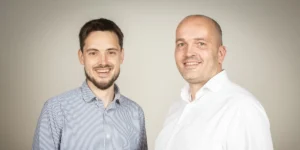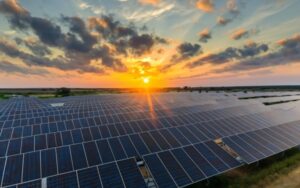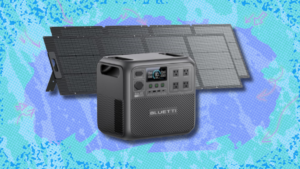Europe’s first offshore hydrogen pilot saw electrolyser performance ‘as high as on land’

French developer Lhyfe has announced results of its pilot floating offshore hydrogen platform, which was tested for six months in the Bay of Biscay, 20km off the coast of Le Croisic in northwestern France, until mid-November last year.
The “Sealhyfe” project was the first to produce hydrogen offshore in Europe, although China’s Dongfang Electric had beaten Lhyfe to the world-first title by a matter of weeks.
Lhyfe noted that its 1MW proton exchange membrane (PEM) electrolyser, which was supplied by Plug Power, was operated “including at maximum production capacity” of 400kg per day, while managing the variability from the project’s 2MW Vestas offshore wind turbine (mounted on BW Ideol’s Floatgen substructure).
“The performance achieved was as high as on land, confirming the reliability of the installation,” the developer said in a press release. It also confirmed to Hydrogen Insight that Plug’s electrolyser had a working range of 10-100%, meaning that it could produce H2 when the electricity input was as low as 10% of its nameplate capacity (ie, 100kW).
Lhyfe added that it had carried out fewer than ten maintenance operations at sea and the system was able to run for 70% of the operating time — despite weathering five storms.
“A complete analysis of the production system once it was back on land confirmed that all equipment had returned unharmed with its production capacity intact,” the French developer said.
Article continues below the advert
Lhyfe also confirmed to Hydrogen Insight that the project only produced 15 tonnes of H2, or around a quarter of the maximum output possible, assuming full utilisation for all of the days it was producing hydrogen at sea. However, it added that the focus of the project was technical feasibility in harsh marine environments rather than maximising production.
The French developer plans to use data from its Sealhyfe pilot to inform and optimise future projects.
This includes its next offshore electrolyser, a 10MW platform off the coast of Belgium dubbed “HOPE”, capable of producing four tonnes a day. Lhyfe has already secured €20m in grants from the European Commission and €13m from the Belgian government for the project, which it aims to bring on line in 2026.
“The positive results of the Sealhyfe trial and the lessons we have learned from it represent a major new step for Lhyfe,” said founder and CEO Matthieu Guesné.
“We can now draw on our experience of three onshore sites and one offshore site to design our next green hydrogen production sites. This bolsters our expertise and the confidence of our partners, and supports the entire industry, because Sealhyfe has made offshore hydrogen production a reality.”






